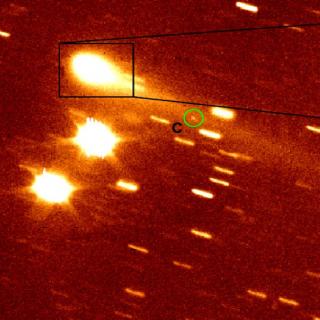Bibcode
Noda, Hirotomo; Senshu, Hiroki; Matsumoto, Koji; Namiki, Noriyuki; Mizuno, Takahide; Sugita, Seiji; Abe, Shinsuke; Araki, Hiroshi; Asari, Kazuyoshi; Cho, Yuichiro; Fujii, Atsushi; Hayakawa, Masahiko; Higuchi, Arika; Hirata, Naoyuki; Hirata, Naru; Honda, Chikatoshi; Honda, Rie; Ishihara, Yoshiaki; Kameda, Shingo; Kikuchi, Shota; Kouyama, Toru; Matsuoka, Moe; Mimasu, Yuya; Morota, Tomokatsu; Nakazawa, Satoru; Ogawa, Kazunori; Ogawa, Naoko; Ono, Go; Oshigami, Shoko; Saiki, Takanao; Sakatani, Naoya; Sasaki, Sho; Sawada, Hirotaka; Shizugami, Makoto; Suzuki, Hidehiko; Takahashi, Tadateru; Takei, Yuto; Tanaka, Satoshi; Tatsumi, Eri; Terui, Fuyuto; Tsuda, Yuichi; Tsuruta, Seiitsu; Watanabe, Sei-ichiro; Yamada, Manabu; Yamada, Ryuhei; Yamaguchi, Tomohiro; Yamamoto, Keiko; Yokota, Yasuhiro; Yoshida, Fumi; Yoshikawa, Kent; Yoshikawa, Makoto; Yoshioka, Kazuo
Referencia bibliográfica
Earth, Planets, and Space
Fecha de publicación:
12
2021
Número de citas
5
Número de citas referidas
5
Descripción
In this study, we determined the alignment of the laser altimeter aboard Hayabusa2 with respect to the spacecraft using in-flight data. Since the laser altimeter data were used to estimate the trajectory of the Hayabusa2 spacecraft, the pointing direction of the altimeter needed to be accurately determined. The boresight direction of the receiving telescope was estimated by comparing elevations of the laser altimeter data and camera images, and was confirmed by identifying prominent terrains of other datasets. The estimated boresight direction obtained by the laser link experiment in the winter of 2015, during the Earth's gravity assist operation period, differed from the direction estimated in this study, which fell on another part of the candidate direction; this was not selected in a previous study. Assuming that the uncertainty of alignment determination of the laser altimeter boresight was 4.6 pixels in the camera image, the trajectory error of the spacecraft in the cross- and/or along-track directions was determined to be 0.4, 2.1, or 8.6 m for altitudes of 1, 5, or 20 km, respectively.
Proyectos relacionados

Pequeños Cuerpos del Sistema Solar
Este Proyecto estudia las propiedades físicas y composicionales de los llamados pequeños cuerpos del Sistema Solar, que incluyen asteroides, objetos helados y cometas. Entre los grupos de mayor interés destacan los objetos trans-neptunianos (TNOs), incluyendo los objetos más lejanos detectados hasta la fecha (Extreme-TNOs o ETNOs); los cometas, y
Julia de
León Cruz